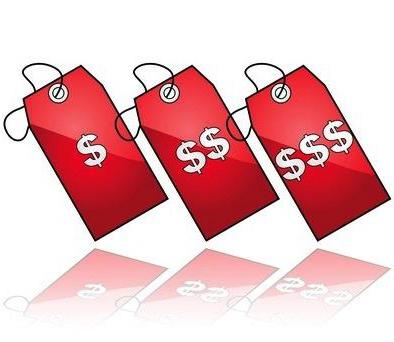A simple monopoly is based on a model in which it is assumed that all units of a product are sold at the same value for a certain period. Such a policy is inevitable in any situation in which resale is possible. There are enterprises that set different prices for different customers on the same product. If such a fluctuation does not reflect differences in production costs, then there is price discrimination of the monopolist. Let us further consider this phenomenon in more detail. 
Urgency of the problem
The mere questioning of such a phenomenon as price discrimination in the market implies a rather high degree of development of commodity circulation. Random and one-time transactions between sellers and buyers, replacing each other, have always been made at different prices. However, over time, conditions began to arise for the formation of a unified pricing policy. Considering the functioning of the economic system in the country, it can be noted that its key elements are the development of commodity-money relations and the level of productive forces. In Russia, these figures are very low. In this regard, it is necessary to stimulate the commodity-money sector, thus contributing to the activation of production. In this case, price discrimination will be an effective tool for attracting to this process those categories of the population who, for one reason or another, refrain from shopping, preferring to accumulate funds. In 1920, a classification of well-known schemes was carried out. As a result, degrees of price discrimination were formulated. Consider them.
First-degree price discrimination
Price discrimination 1 tbsp. means that the entrepreneur sells different units of goods at different prices for certain individuals. This model is sometimes called perfect. This scheme assumes that the manufacturer knows the preferences of each buyer and, in accordance with this, can offer an individual range of services or a personal product. The resulting consumer surplus is appropriated by the entrepreneur. Such conditions of price discrimination are considered idealized. In practice, such a scheme usually cannot exist. The implementation of this model is hindered by informational imperfection and the tools that the arbitral tribunal has. 
Second-degree price discrimination
Price discrimination 2 tbsp. assumes that the entrepreneur sells different units of production at different prices, but each individual who acquires the same amount pays the same amount. In this case, the values differ depending on the volume of the goods. Such a scheme is similar to a perfect model, but it is expressed somewhat more rigidly. The entrepreneur manages to appropriate not all the surplus, but only a certain part of it.
Third-degree price discrimination
Price discrimination of the third degree arises when the entrepreneur sells the issue to various individuals at different prices. However, in this case, each unit of production is sold for the same amount. This is the most common price discrimination. Examples of such a scheme: discounts for senior citizens, benefits for students, the poor and so on. Simply put, an entrepreneur initially divides buyers into specific groups. Accordingly, the unit cost of the product will differ depending on the category. But at the same time, for each individual of a particular group, its initial price will remain the same when buying a different quantity of goods / services.As a result, the entrepreneur also gets the opportunity to appropriate a part of the consumer surplus. 
Cost differences
Several factors influence the price of a product. The main ones include:
- Quality.
- Volume of consumption.
- Solvency of the buyer (if known to the manufacturer).
- Acquisition time (night, day off, day, end of season or its high, etc.).
The mechanism of the "perfect model"
As mentioned above, the existence of this scheme in real life is almost impossible. To consider this model, it should be assumed, first of all, that there is no arbitration. In addition, to implement the perfect scheme, the manufacturer must have all the information about its customers, he should be aware of the demand curve for each of them. In reality, it is impossible to obtain such information. Perfect price discrimination allows for interpersonal and individual differences in the value of demand. 
Tools of the second scheme
Under this scheme, benefits are divided into certain groups. Each of them has its own cost - a multi-part tariff. For their exact establishment, the entrepreneur must know the demand curve of each buyer, that is, the level of his willingness to pay for a particular product. However, even having some information about the statistical distribution of solvency, it is extremely difficult for the manufacturer to put this knowledge into practice. As one of the solutions of this complexity is the formation of two different combinations of price / quality. One should be directed to the consumer with a low, and the other - with a high level of demand. Often, an entrepreneur forms such combinations that encourage the buyer to choose exactly the option that was specifically designed for them. Thus, there is a certain "self-selection" of consumers. In practice, this phenomenon is often stimulated by product quality. This, in fact, is this price discrimination.  Examples of such a scheme: discounts and allowances for benefits. So, some airlines provide passengers with a choice of two fares: with restrictions and without them. The latter is intended for people who often make business trips. The absence of restrictions allows them to freely manage their time, taking into account the specifics of their activities, as their plans can suddenly change. The second tariff is provided for ordinary tourists. Restrictions may include the need to purchase tickets in advance, make transfers on the way, and so on. Accordingly, the first fare is higher than the second, but it is more attractive for solvent passengers. They cannot bind themselves by limitations, since the success of their activities depends on this. But for tourists, the restrictions are quite acceptable. They are willing to pay less and experience them. As a result, each consumer will choose exactly what was intended specifically for him. As for the airline itself, it will receive more profit with two options than if it sold tickets at the same price for everyone.
Examples of such a scheme: discounts and allowances for benefits. So, some airlines provide passengers with a choice of two fares: with restrictions and without them. The latter is intended for people who often make business trips. The absence of restrictions allows them to freely manage their time, taking into account the specifics of their activities, as their plans can suddenly change. The second tariff is provided for ordinary tourists. Restrictions may include the need to purchase tickets in advance, make transfers on the way, and so on. Accordingly, the first fare is higher than the second, but it is more attractive for solvent passengers. They cannot bind themselves by limitations, since the success of their activities depends on this. But for tourists, the restrictions are quite acceptable. They are willing to pay less and experience them. As a result, each consumer will choose exactly what was intended specifically for him. As for the airline itself, it will receive more profit with two options than if it sold tickets at the same price for everyone. 
Features of the third model
Under this scheme, it is assumed that goods are sold to different individuals at different prices. However, at the same time, each of its units, which are acquired by a certain consumer, is paid by him at one price. In the schemes described above, a grouping of material values was assumed. Price discrimination according to this model provides for the classification of consumers directly into categories. In this case, it is also assumed that the manufacturer knows the preferences of each group as a whole. However, the entrepreneur does not know the needs of certain buyers, as well as the features of their distribution within the formed categories.This means that the manufacturer does not have the opportunity to conduct additional price discrimination among potential users or in any particular market segment according to previous schemes. In this regard, for each individual sector, it will be forced to establish a single cost for this group of consumers. In a market characterized by greater elasticity, a reduced, and with less elasticity, an increased price is formed. 
Conclusion
Price discrimination is a fairly flexible tool. When used correctly, it is possible to significantly strengthen the position of manufacturers, increase consumer demand, and attract money. Undoubtedly, in the conditions market competition the implementation of price discrimination is greatly complicated. However, the capabilities of well-known models should in no case be underestimated. It is necessary to more thoroughly study their mechanisms in order to subsequently have a clear program for their implementation.








